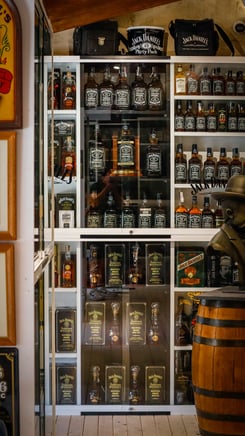 Tracking and managing liquor inventory is a critical aspect of running a successful bar. Effective management ensures accurate stock levels, reduces costs, prevents theft, and optimizes profitability. Let's explore some essential strategies for tracking and managing liquor inventory within a bar inventory system and liquor inventory system.
Tracking and managing liquor inventory is a critical aspect of running a successful bar. Effective management ensures accurate stock levels, reduces costs, prevents theft, and optimizes profitability. Let's explore some essential strategies for tracking and managing liquor inventory within a bar inventory system and liquor inventory system.
-
Accurate Measurement: Begin by measuring and recording the initial stock levels of all liquor bottles. Use precise measuring tools such as scales or liquor meters to determine the exact quantities.
-
Regular Inventory Counts: Conduct regular inventory counts to track the consumption of liquor. This can be done on a weekly, bi-weekly, or monthly basis. Compare the recorded quantities with the actual stock levels to identify any discrepancies.
-
Categorization and Organization: Categorize liquor inventory by type, brand, and size. Organize the bottles in a systematic manner, making it easier to locate and count them during inventory checks.
-
Standardized Pouring Methods: Implement standardized pouring methods and train bartenders to follow them consistently. This reduces wastage and ensures accurate portion control.
-
Bar Inventory System: Utilize a reliable bar inventory system or inventory management software to streamline tracking and management processes. These systems can track sales, generate reports, and help with forecasting and ordering.
-
Loss Prevention Measures: Implement measures to prevent liquor theft or unauthorized consumption. This includes securing storage areas, limiting access to authorized personnel, and monitoring inventory closely for any irregularities.
-
Reordering and Stock Control: Analyze liquor consumption patterns and set par levels for each type of liquor. Establish a reordering system based on these par levels to prevent stockouts and ensure a continuous supply.
-
Supplier Relationships: Cultivate strong relationships with liquor suppliers. Maintain open communication and negotiate favorable terms to ensure timely deliveries and competitive pricing.
-
Training and Education: Provide training to staff members on the importance of accurate liquor inventory management. Educate them on proper handling, pouring techniques, and the significance of minimizing waste.
-
Ongoing Analysis and Adjustment: Continuously analyze liquor inventory data, sales trends, and customer preferences. Make adjustments to your inventory management strategies based on this analysis to optimize stock levels and increase profitability.
In conclusion, tracking and managing liquor inventory is crucial within a bar inventory system and liquor inventory system. By implementing accurate measurement techniques, conducting regular inventory counts, utilizing technology, preventing losses, maintaining supplier relationships, and analyzing data, bars can efficiently track and manage their liquor inventory. This results in better cost control, enhanced customer service, and improved profitability for the establishment.


